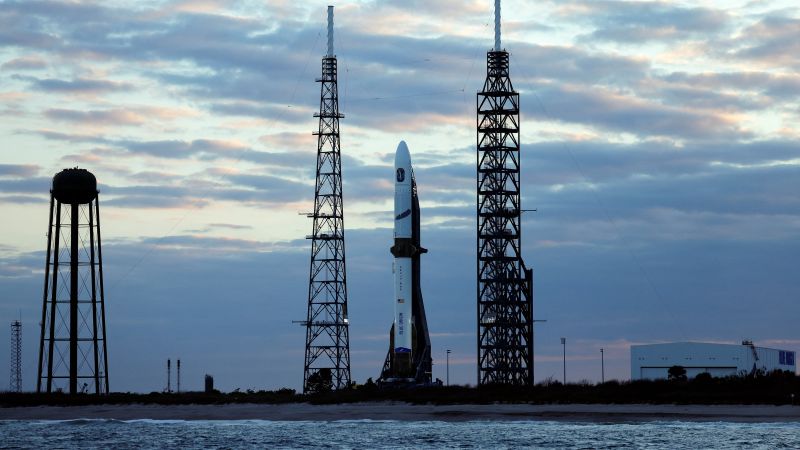As Blue Origin embarks on a pivotal new chapter, the company founded by Jeff Bezos nearly 25 years ago is on the cusp of a groundbreaking achievement. The commercial space sector is abuzz with anticipation as Blue Origin prepares to launch its New Glenn rocket into orbit for the very first time. This mission represents a critical milestone not only for Blue Origin but for the broader commercial space industry as it seeks to challenge the long-standing dominance of SpaceX, helmed by Elon Musk.
Scheduled to make its debut as early as 1 a.m. ET on a Sunday from the historic Cape Canaveral Space Force Station in Florida, the New Glenn is poised to become a significant player in the heavy-lift launch vehicle category. Blue Origin is set to provide a live stream of the mission on its YouTube channel and official website approximately one hour ahead of launch. Undertaking the maiden flight of this rocket, which boasts a towering height of approximately 320 feet (or about 98 meters), marks an ambitious move for a company that has yet to send a vehicle into orbit.
The New Glenn is not just any rocket; it’s designed to transport satellites into space, and its power places it among the most formidable launch vehicles in existence. With more than double the thrust of SpaceX’s Falcon 9, a mission workhorse, the New Glenn promises to carry payloads that could change the landscape of satellite deployment and other ventures within the aerospace industry.
For the inaugural flight, Blue Origin’s uncrewed rocket will carry the Blue Ring Pathfinder, a technology demonstration entity developed in-house by the company. Should the launch prove successful, it would give Blue Origin a much-needed foothold in the competitive landscape of commercial rocket launches. If everything goes according to plan, the rocket will ignite seven BE-4 engines at the base of its first-stage booster. This stage is critical, as it generates the initial thrust needed to lift the entire vehicle off the ground.
Several minutes post-launch, as the New Glenn consumes most of its fuel, the first-stage booster will detach from the upper section, which includes the payload fairing and the deployment of the Blue Ring Pathfinder. The booster is ingeniously designed; it utilizes fins and strakes for a guided descent towards a recovery platform named Jacklyn, paying homage to Bezos’s mother. The landing procedure involves reigniting some engines and deploying six extensive landing legs, facilitating the reusable aspect of the booster — a strategy aimed at lowering launch costs.
While the upper stage makes its way into space, two specially designed engines will help the New Glenn achieve the necessary speeds for orbit—around 17,500 miles per hour—propelling it further into the cosmos. For this mission, Blue Origin does not plan to deploy a satellite; instead, the Blue Ring Pathfinder will remain attached to the rocket during its six-hour cruise.
However, despite the hopeful outlook, Blue Origin acknowledges that success is not guaranteed. There are risks at every stage of the flight. The company has previously tested the BE-4 engines for only a mere 24 seconds, and the engines for this flight will need to operate significantly longer to successfully counter the forces of gravity. Potential problems could compel the company to initiate a self-destruct procedure if the rocket veers off its designated flight path.
Even if the primary mission is accomplished, with the rocket’s second stage reaching the intended orbit, Blue Origin could still encounter challenges—particularly in landing the booster back on the Jacklyn platform. Still, failure to land the booster would not spell an end to the mission’s success; the primary emphasis remains on flying the payload to its destination.
Experts, including Caleb Henry from Quilty Space, assert that if the New Glenn rocket demonstrates its capabilities, it could significantly enhance Blue Origin’s position as a reliable launch provider in an industry undergoing rapid evolution. As the landscape shifts towards larger payloads and heavier rockets, the New Glenn’s potential becomes even more relevant and vital — especially as it enables streamlined launches for operators seeking to deploy larger constellations of satellites.
As the New Glenn gears up for its historic flight, the anticipation surrounding this landmark mission is palpable, reflecting not only the ambitions of Blue Origin but also the ongoing transformation of the commercial space industry. Whether or not Blue Origin is successful will likely set the tone for future endeavors in this expanding domain where innovation and competition reign supreme.



